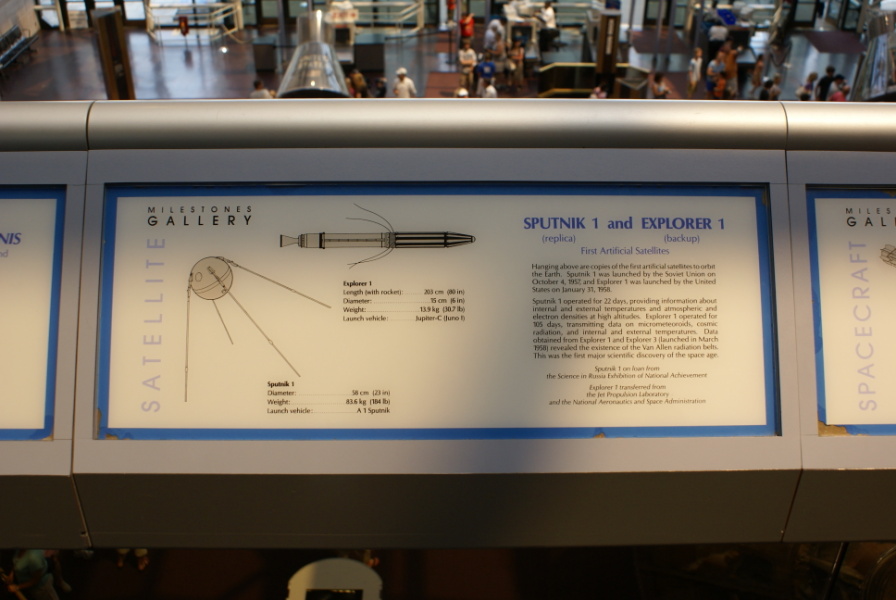| Prev |
heroicrelics.org National Air & Space Museum Site Index Milestones of Flight Gallery |
Next |
dsc31141.jpg
The sign by the Sputnik 1 replica and Explorer 1 backup. It reads
SPUTNIK 1 (replica) and EXPLORER 1 (backup)
First Artificial Satellites
Hanging above are copies of the first artificial satellites to orbit the Earth. Sputnik 1 was launched by the Soviet Union on October 4, 1957, and Explorer 1 was launched by the United States on January 31, 1958.
Sputnik 1 operated for 22 days, providing information about internal and external temperatures and atmospheric and electron densities at high altitudes. Explorer 1 operated for 105 days, transmitting data on micrometeoroids, cosmic radiation, and internal and external temperatures. Data obtained from Explorer 1 and Explorer 3 (launched in March 1958) revealed the existence of the Van Allen radiation belts. This was the first major scientific discovery of the space age.
Sputnik 1 on loan from the Science in Russia Exhibition of National Achievement
Explorer 1 transferred from the Jet Propulsion Laboratory and the National Aeronautics and Space Administration
Explorer 1 Length (with rocket): 203 cm (80 in) Diameter: 15 cm (6 in) Weight: 13.9 kg (30.7 lb) Launch vehicle: Jupiter-C (Juno I)
Sputnik 1 Diameter: 58 cm (23 in) Weight: 83.6 kg (184 lb) Launch vehicle: A 1 Sputnik
The Explorer 1 backup appears to be NASM catalog #A19620034000. The Sputnik 1 replica is on loan; it does not appear to have a NASM catalog number, but NASM does have a page about it.

| Time picture taken | Tue Jun 19 10:34:54 2007 |
| Location picture taken |
Second Floor Balcony Overlooking Milestones of Flight Gallery National Air & Space Museum Washington, DC |
| Prev |
heroicrelics.org National Air & Space Museum Site Index Milestones of Flight Gallery |
Next |